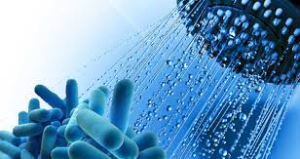Please click the frequently asked questions below for further information and IPC precautions required:
-
What is Legionella Spp.?
Legionellosis is a collective term for diseases caused by Legionella bacteria, including the most serious Legionnaires’ disease, as well as the similar but less serious condition of Pontiac fever.
Legionnaires’ disease is the pneumonic form of the disease causing a potentially fatal form of pneumonia.
Pontiac fever causes an acute, self-limiting influenza-like illness with symptoms that include fever, headaches and muscle aches, but unlike Legionnaires’ disease, Pontiac fever does not cause pneumonia.

-
How does it spread?
Legionella bacteria are widely distributed in natural and artificial water supplies, and in soil. Exposure is airborne (either indoor or outdoor) usually through aerosolised water which is contaminated with Legionella.
Hospital equipment implicated in outbreaks and identified as producing aerosols include: showers, cooling towers, water-cooled air conditioning systems and humidifiers.
The bacteria are not transmissible from person to person.
-
What are the symptoms of Legionella spp.?
Legionnaires disease causes pneumonia.
Pontiac Fever symptoms include:
- Fever
- Headaches
- Muscle Aches
- Unlike Legionnaires’ disease, Pontiac fever does not cause pneumonia.
-
Why is this important?
If NIAS staff are aware that the patient has a suspected or confirmed case this should be communicated to the Control Room (Emergency or Non-emergency as appropriate) and the staff in the receiving unit when transferring the patient to ensure effective patient care and management.
-
IPC Precautions
- Standard Precautions should be used.
- Hand Hygiene should be completed as per the 5 moments in line with usual practice.
- Eye protection should be risk assessed for any concern regarding a splash risk.
- Gloves and Aprons should be risk assessed and worn if contact with the patient’s blood or bodily fluids.
- Laundry should be treated as per usual local policy.
-
What cleaning is required?
All equipment and the ambulance should have an in-between patient clean, paying particular attention to touch points.
-
Do staff need prophylaxis or follow up?
No staff follow up required.




